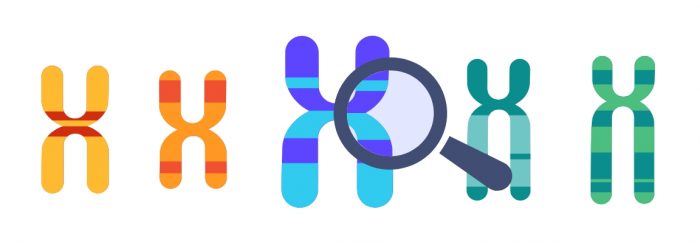We all love dogs. Why wouldn’t we? They are beings of light. At tellmeGen, in fact, we love them so much that we have decided that we want to learn more about them. And we want you to learn more about them too.
That’s why, using our years of experience as a leading company in human genetic testing, we are going to try something new. As the story of evolution goes, staying stagnant is one of the best ways to disappear. We are going to move. We are going to do something new.
We are going to create genetic tests for dogs.
And before someone thinks, “Why?” the logical question is actually, “Why not?” 85% of the genes in humans have their counterparts in dogs. The methodology, techniques, and processes we use to genotype our human users are valid for genotyping our future canine users.
We even share diseases. Like us, they can also suffer from hemophilias (for example, Von Willebrand disease), similar dystrophies, or polycystic kidney disease. They are not distant cousins.
The first canine genome was fully sequenced in 2005. With its 39 chromosomes and 2.8 billion base pairs, with approximately 20,000 protein-coding genes (fewer than humans), working with them was a viable option.
Of course, it’s not all the same. We have had to make changes to the genotyping chip, check the new genes and variants, analyze databases with hundreds of dogs, their diseases, traits, and breeds. But fundamentally, among mammalian friends, it’s not so different from the work we do in our studies with humans.

What do we offer? Besides genes and dogs
The examples mentioned earlier are not coincidental. The new test will be divided into three blocks, and two models, inspired by the human product. In the DNA test for dogs in the Starter range, you will find:
- Breed DNA test. Ancestry studies in humans had a clear equivalence with dogs. After all, dog breeds are their population groups. Dog breeds are crossbred and trained by their owners for generations to serve a specific function within the community. This implies genetic variations and different ingrained instincts among them.
- Pet physical traits DNA test. Are you aware of all the different coat colours that dogs have? We are. And so are their genes. Together, we will tell you about your dog’s coat colours, along with additional data.
If you’re thinking of going all-in and want to know what you’ll find in the Advanced range DNA test for dogs, we’ll add:
- Pet health DNA test. We will tell you if your dog is a carrier or not of over 130 different diseases. If the animal carries pathogenic genes, we will notify you in the report and you can find out if it has the disease, along with the recommendations you should consider in case it does.
The option to find and contact relatives is currently under development and, once implemented, it will be free for all our users.
Same dog, different collar
If you have used a tellmeGen kit before, you already know that we strive to make our products user-friendly.
The new kit also requires a saliva sample, but this time you’ll have to struggle to insert a swab into your dog’s mouth to obtain it.
And then remove it without the dog eating the swab.
The rest is the same, with creating an account and user registration, shipping and returning the kit, and finally, receiving the results via email.
Throughout the process, we will keep you informed about the status of the sample. We understand that dogs are very impatient and may pester you to know the results as soon as possible, so we will notify you when the report is ready.
If you have any questions, you can always contact our customer support. While the website is available in Spanish and English, and we will gradually add other languages, we do not plan to incorporate barking, so you will need to contact us yourself, even if the questions are about your dog. We apologize in advance.
And in the meantime, we will continue to improve.
But please, don’t ask us for a test for cats just yet. We still have to figure out how to extract their saliva without them extracting blood from us at the same time.



